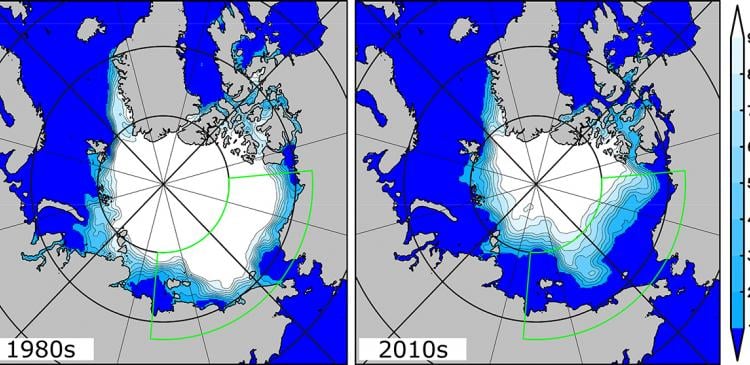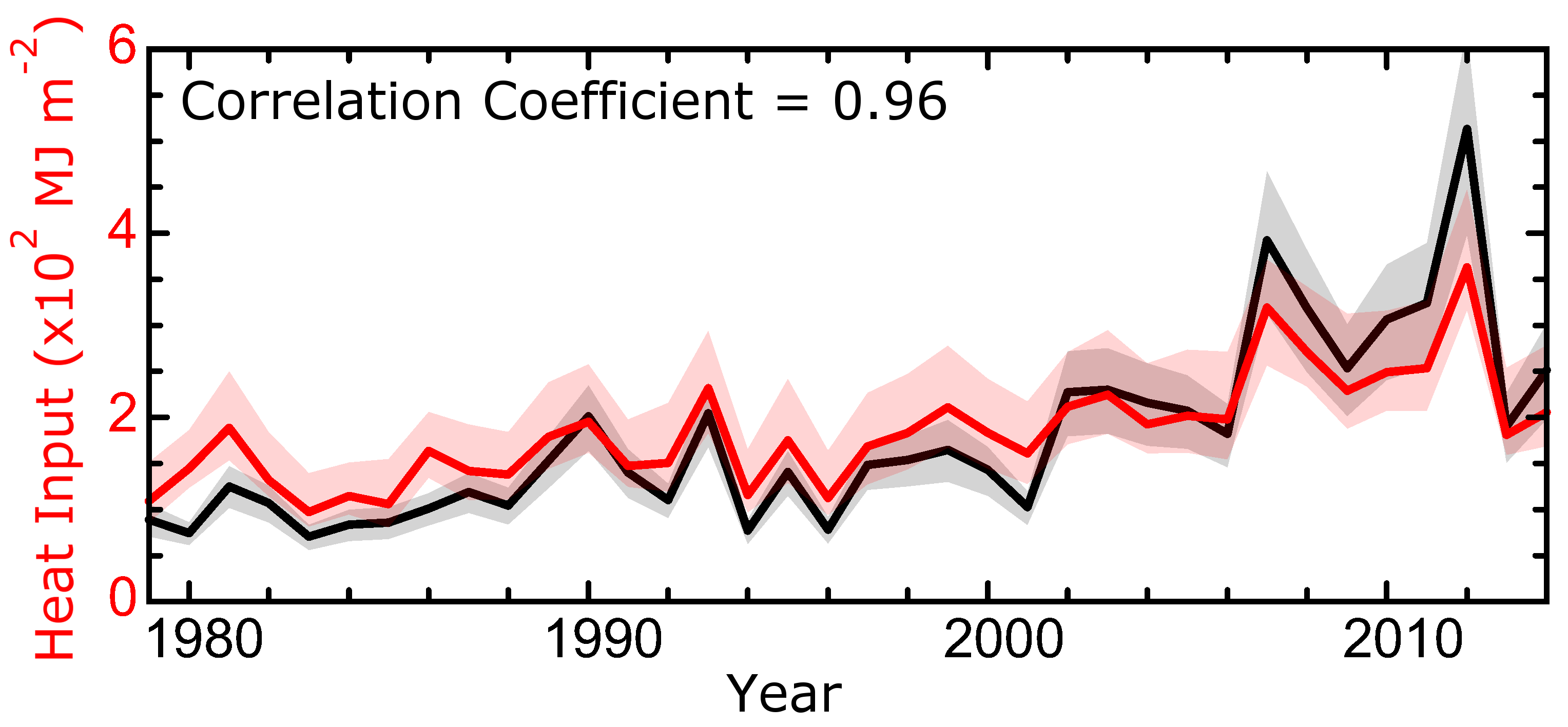Ice-covered sea areas in the Arctic Ocean during summer have nearly halved since the 1970s and 1980s, raising alarm that the ocean is shifting from a multiyear to a seasonal ice zone. The Intergovernmental Panel on Climate Change (IPCC) has forecasted summer ice cover in the polar ocean might disappear almost completely as early as 2050. Various factors have been cited as causes, including rising temperatures and changes in atmospheric circulation patterns.
Recently, however, ice-ocean “albedo feedback” has emerged as a key cause for sea ice melt. The feedback is generated by a large difference in albedo – a measure of light reflectivity – between open water and ice surfaces. As dark ocean surfaces absorb more light than white ice surfaces, solar heat input through the open water melts sea ice, increasing both open water areas and heat input and thus accelerating sea ice melt.
To examine this theory, a team of researchers including Hokkaido University Professor Kay I. Ohshima and Haruhiko Kashiwase of the National Institute of Polar Research, conducted a quantitative analysis of key factors such as solar energy input, ice melt volume and ice divergence of a sea area that has shown major ice melt.
Analyzing the data from 1979 to 2014, the researchers found the solar heat input through open water surfaces correlated well with ice melt volume, suggesting heat input is a major causative factor of melting ice. This was particularly obvious after 2000, when there were considerable reductions in sea ice.
Their data also revealed that sea ice divergence, which reflects the amount of sea ice spreading outward making more water surfaces, in the early melt season (May-June) triggers large-scale feedback, which subsequently amplifies ice melting in the summer. The volume of ice divergence has doubled since 2000 due to a more mobile ice cover as multiyear ice has declined, which can explain the drastic ice reduction in the Arctic Ocean in recent years.
“This study was the first to quantitatively elucidate that ice-ocean albedo feedback is a primary driver of seasonal and yearly variations in Arctic sea ice retreat,” says Kay I. Ohshima. “The study pointed to the possibility of forecasting the largest sea ice retreat in a given year based on the magnitude of ice divergence in May and June. Furthermore, unraveling the causes of sea ice retreat should help us understand the mechanisms behind climate change on a global level, which is interrelated to the ice reduction in the Arctic ocean.”
Contacts:
Professor Kay I. Ohshima
Institute of Low Temperature Science
Hokkaido University
Email: ohshima[at]lowtem.hokudai.ac.jp
Naoki Namba (Media Officer)
Global Relations Office
Institute for International Collaboration
Hokkaido University
Tel: +81-11-706-2185
Email: pr[at]oia.hokudai.ac.jp





